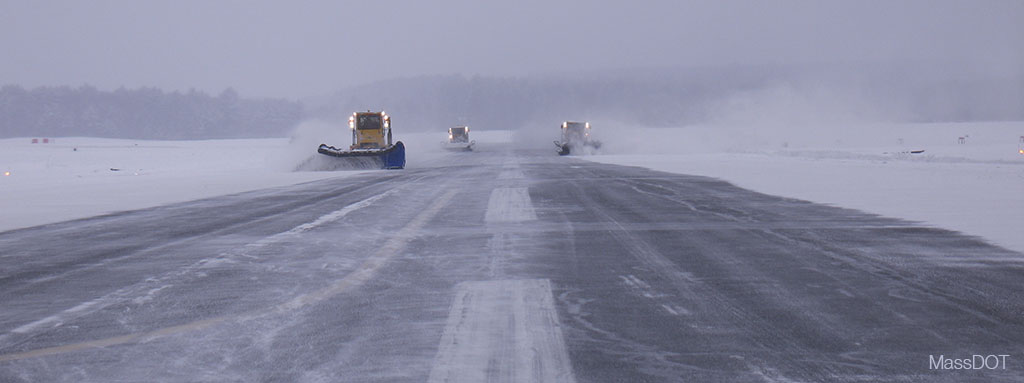Climate change is already happening, and the rising temperatures are leaving some aeroplanes on the ground. Last summer, for example, a large number of regional flights had to be cancelled in Arizona due to temperatures exceeding the maximum 48 ºC recommended for these types of aeroplanes.
Climate change often sounds like something that is a long way away, but it is clearly already affecting air transport.
And even without reaching the extreme of cancelled flights, higher temperatures still affect an aircraft’s maximum take-off weight. Air density decreases at higher temperatures, reducing the lift, which means aircraft need longer runways to achieve the necessary take-off speeds. In airports where the runway length is insufficient, it is necessary to reduce the weight of the aircraft, either by decreasing the amount of fuel or the number of passengers. It is estimated that these weight reductions could reach up to 4%, depending on the type of aircraft, runway length, runway elevation and actual temperature.
In the future, it is predicted that between 10-30% of annual flights flying during the hottest hours of the day may suffer some kind of restriction. This is something that is already happening on the hottest days in London City Airport.
For example, at Denver airport, which has 6 runways with a maximum length of 4,877 metres, a Boeing 777-300 would have to reduce 5% of the payload during 53% of flights during the hottest hours of the year. This would mean that 18% of passengers would not be able to fly, which would have damaging consequences for passenger experience and would entail significant economic impact on airlines. A possible solution is to build longer runways, but this is not always possible in existing airports.
In addition, the increase in the intensity and frequency of rainfall will cause delays, as it makes it necessary to increase the separation between different aircraft in flight, which will lead to a reduction in the capacity of airports. A widespread and sustained increase in rainfall will also require a review of the capacity of drainage systems, in order to check whether they will be able to cope with more intense rainfall and avoid flooding of runways and platforms.
If the precipitation is in the form of snow, it will also be necessary to equip airports with greater aircraft de-icing areas to avoid delays in take-offs.
Climate change is also expected to cause changes to the usual wind rose in some regions. As runways are built in the direction of the prevailing wind, these changes could lead to more frequent crosswinds, which would result in an increase in the number of aborted landing manoeuvres, and even the need to divert flights to other airports. As a result, it would be necessary to modify procedures and redesign the airspace, with the consequent impact on the noise footprint of the airport’s surrounding area.
Experts predict that sea levels are going to rise between 0.5 and 2.0 metres this century. This could result in permanent flooding of many airports located close to coastlines, as well as temporary flooding caused by tides and storms.
Given that half of the world’s population lives less than 60 km from the sea and three quarters of major cities are located on the coast, many of the world’s largest international airports are located close to sea level. For example, San Francisco airport is 4 m above sea level, and Amsterdam Schiphol and Bangkok airports are 3 m above sea level.
In Europe, about 34 major airports are located in the flood zones of coasts or rivers.
Avinor – owner and operator of 46 airports in Norway – has decided that all its future runways will be built at least 7 metres above sea level. This is a clear example of operators taking into account the foreseeable effects that climate change may have on airports.
Another concrete example of this problem can be found in the general facilities and runways at Oakland International Airport. They could be flooded by daily tides with a sea level rise of just 40 cm, which is within the range of most mid-century projections. In addition, storm events added to the 40 cm of sea level rise could make some airports’ main access roads impassable.
According to studies conducted by the San Francisco Bay Conservation and Development Commission, the sea level in San Francisco Bay will increase by 24 inches (60 cm) by 2050. This increase would result in the flooding of almost the entire airport, as can be seen on their website (click here).
Clearly, there is no single solution to the problem of airport flooding due to rising water levels, and each situation will have to be analysed and assessed in its specific context.
In summary, the implications of climate change in airports will affect passengers, airlines, inhabitants of nearby areas and operators. Therefore, it is necessary to start proposing possible solutions for each airport. It is also time to rigorously and decisively implement all measures we have in our hands to really reduce CO2 emissions, in order to stop exacerbating the problem.



